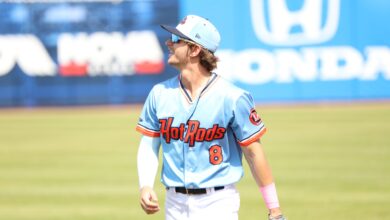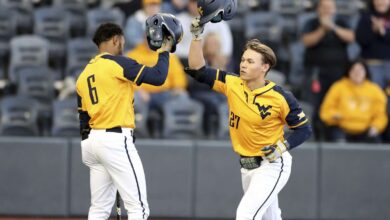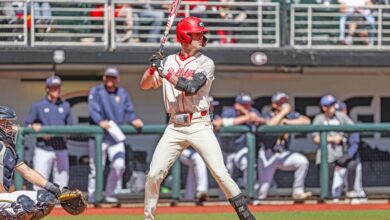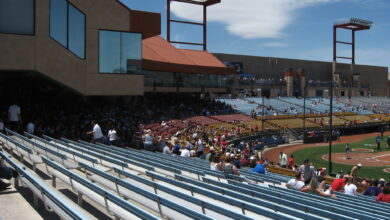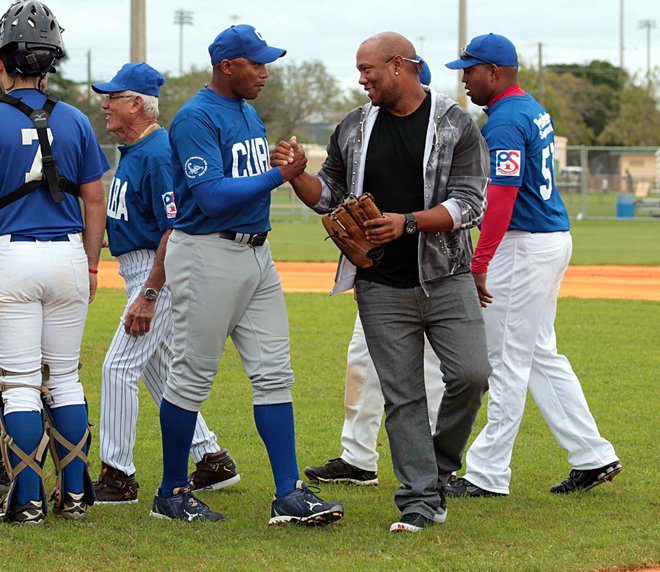
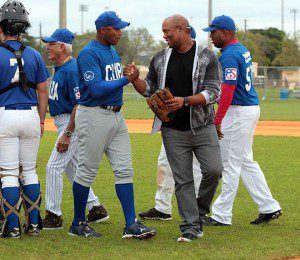
While the governments of the United States and Cuba do not have formal relations, all neighbors should try to get along and strive for common ground. Baseball will always be America’s pastime. And in Fidel Castro’s regime, a ball field is almost as sacred as the Catholic Church. It’s a sport we love and a rivalry we share.
You probably already know where I’m going with this topic, since the celebrated signing of Yoenis Cespedes and other phenoms have been a hot news topic of late. If you’re a Miami Marlins fan, you have to still be bummed out that Cespedes chose to perform in an aging Oakland facility instead of a sparkling new stadium in South Florida’s “Little Havana.” I’m wondering, though, if the mystique surrounding this “new breed” of Cuban players is worth all the hype and big money. Just because they have great genes and international esteem, does that make them better than a college standout from a Division I school?
Cuban baseball dates back as far as the 1870s, albeit two decades later than the game’s first organized league was formed in New York. Island teams would soar in prominence prior to World War II, winning championships in World Cup competition 25 times since the tournament began in 1938. Similar results were achieved in the regional Caribbean Series, until Castro pulled the plug on professional sports in 1961.
The great Minnie Minoso and Luis Tiant led a parade of Cuban players who would surface in the major leagues, and it troubles me that neither man has been elected to the Hall of Fame. In fact, among a group of former stars like Bert Campaneris, Camilio Pasquel, Mike Cuellar and Tony Olivas, former Cincinnati Reds first baseman Tony Perez is the lone Cuban to be enshrined at Cooperstown.
Due to the fear of Castro’s iron fist, there was a drought of Cuban talent exposed to the free world until three pitchers, Jose Contreras and half brothers Orlando and Livan Hernandez, came on the scene. They would also become the first cash in on lucrative, modern-day contracts. Probably the best known of the trio was Orlando, the high-kicking “El Duque,” who fled Cuba in a rickety boat on Christmas Day in 1997. He would go on to win four World Series rings with the New York Yankees and Chicago White Sox, and experts are still trying to figure out his real age. Livan, who is still active, has accumulated earnings estimated at $52 million over 15 big league seasons. Contreras signed for a then-record, four-year deal worth $32 million with the Yankees in 2003. But these players were icons who made an enormous impact with their respective teams.
Today, there are plenty of established Cuban players like Yunel Escobar, Kendrys Morales and Alexei Ramirez, all non-pitchers, who carry the torch. But to me, the new crop of prospects seem a bit watered down. These players are young and bold, seemingly not afraid of the old Communist guard. They walk out of European hotels and into a waiting taxi, like Aroldis Chapman did in Rotterdam in 2009. They have found refuge in countries with lenient immigration policies like Canada, Mexico and even Taiwan. Most Cubans on the move, however, quickly establish residency in the Dominican Republic, where they become free agents and obtain work visas from the teams that draft them.
All totaled, there have been a reported 21 Cuban players who have defected since 2009. Here are a few of the highest ranked millionaires, many who will be back in the minor leagues when spring training camps break:
Jose Iglesias, Boston Red Sox
The 22-year-old shortstop actually played 10 games with the varsity last season, and given Boston’s lack of middle-infield depth, he has a decent chance of making the team. Known as a slick fielder with a weak bat, Iglesias defected while playing in the Junior World Games in Canada and signed a $14.2 million deal in 2009 that included a $5 million bonus.
Adeiny Hechavarria, Toronto Blue Jays
This shortstop, slightly older than Iglesias, will give the press fits trying to spell his name if he makes it to “The Show.” Hechavarria was impressive in double-A ball last season, and did well in limited duty after being promoted. He is an all-around talent with some power who can also steal a base. Adeiny agreed to a $10 million pact over four years in 2010.
Noel Arguelles, Kansas City Royals
A good-sized, left-handed pitcher, Arguelles inked a five-year, $7 million deal in 2009. But the 6′-3″, 225 pound hurler underwent shoulder surgery a year later and rehabbed in A ball last season.
Yunesky Maya, Washington Nationals
A right-handed pitcher who was a rotation staple in the Cuban league since 2004, Maya has yet to live up to expectations. The 30-year-old veteran has compiled a modest, 1-4 record over 58 innings in parts of two seasons on the Nats staff. With chronic elbow soreness, Maya may have been damaged goods when Washington signed him to a four-year, $8 million contract.
Leonys Martin, Texas Rangers
Nolan Ryan’s team got an outfielder with some experience when they signed Martin, 26, to a five-year deal last season. In shelling out $15 million, the Rangers invested in a player near his prime. Leonys is not only expected to make the team, but scouts predict he will create some excitement.
Gerardo Concepcion, Chicago Cubs
A slender, 18-year-old left-handed pitcher, Concepcion took a page out of Chapman’s escape manual when he also fled Holland and defected while playing in the World Port Tournament. Concepcion was Rookie of the Year in the 2010-11 Cuban campaign and considered the top mound prospect available. The Cubs are tight-lipped about the contract details, but I’ve heard that the kid will make around $7 million, probably over five years, which would not include a sizeable signing bonus. One thing for sure is Gerardo will be brought along slowly.
Jorge Soler, a tall, powerful 19-year-old outfielder, was recently granted free agency and has been linked to the Cubs, White Sox and Yankees at this posting. With three other teams, including the Philadelphia Phillies, also reportedly in the mix, a bidding war could reach the $28 million mark. Soler is a five-tool talent with a magnetic personality who would eventually be a perfect fit for a large-market team. Still, that’s a lot of dinero for a teenager to comprehend, regardless of his makeup or background.
When I look at a player like Ramirez, the White Sox shortstop, I totally get it. Alexei is a late-blooming star and Silver Slugger Award winner. He deserves every penny he earns. Should Chapman, a flashy, highly publicized performer, take $2 million to the bank every year? Hell yes, as long as he continues to throw the ball 102 mph.
Then again, I look at the money showered on Cespedes — $36 million over four years — and I have to scratch my head in amazement. I know that Billy “Moneyball” Beane has a full trade clause and an inexpensive buyout in place, which will surely be exercised when Yoenis gets too expensive down the road. Nonetheless, there’s a considerable risk here.
Oakland fans have long suffered since the days of Campaneris and later, Jose Canseco. Beane dealt Gio Gonzalez and two other front-line pitchers to pull off this splashy coup. If Cespedes is a success, Billy will continue to be billed a genius. But if this guy is a bust, there will be some explaining to do.
More importantly, the questions will persist about the ability of today’s Cubans when compared to the legends of the past.



